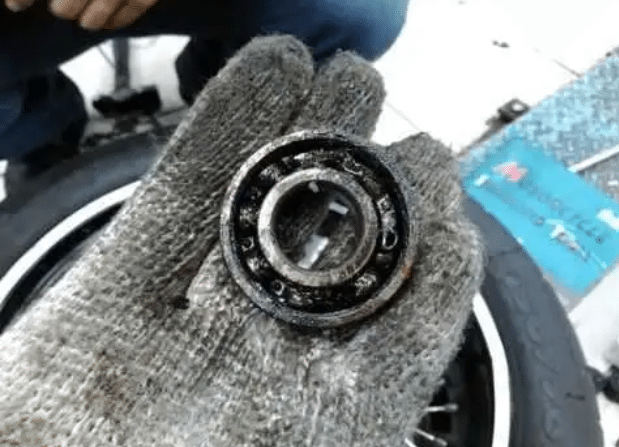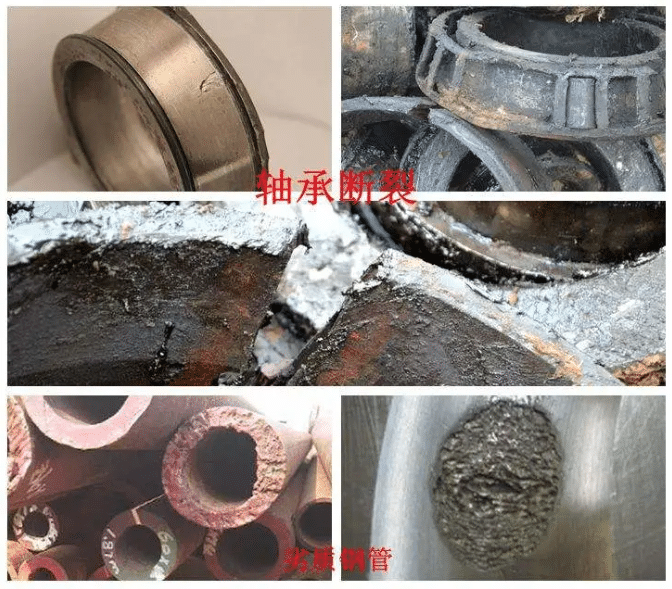The bearing capacity, rotation accuracy and antifriction performance of rolling bearing will change due to its own quality and external conditions in the use process. When the performance index of bearing is lower than the use requirements and cannot work normally, it is called bearing damage or failure. Once the bearing is damaged and other unexpected conditions occur, the machine and equipment will stop running and the function will be damaged And other abnormal phenomena.
If the bearing is broken, the cause of the damage should be analyzed first, and then a solution should be found. Therefore, it is necessary to find out the causes in a short time and take corresponding measures.
Bearing is a loss type part, as long as it is used, it will definitely be damaged. Only to accumulate to a certain extent can it be displayed, that is to say, to a certain amount can it be bad. Of course, the damage of rolling bearing is much more complicated than that of general mechanical parts. The characteristics of the damage of rolling bearing are many forms and complicated reasons. Apart from the internal factors of bearing design and manufacturing, most of the damage of bearing is due to improper use, such as: suitable selection of type cloth (refer to the instructions of customers), support Unreasonable design, improper installation, poor lubrication, poor sealing and other external factors. The following 8 points are the main factors of bearing failure:
1. Metal corrosion
If lack of lubrication, it is easy to be oxidized and rusted by air. To prevent bearing corrosion, do not use blisters. Bearings are made of fine steel, but they are also afraid of water. When the bearing is taken by hand, the sweat on the hand shall be fully washed off, and the operation shall be carried out after the application of high-quality mineral oil. In rainy season and summer, special attention shall be paid to rust prevention.
The specific causes of bearing natural corrosion and wear are as follows:
① Oxidation wear. The tiny peaks and valleys on the friction surface are squeezed each other, making the brittle surface gradually fall off and wear. The tiny peaks and troughs on the surface of the relative movement of the bearing and the oxidation synthesis in the air generate brittle oxide which is not firmly bonded with the base metal. The oxide is easy to fall off in the friction, and the wear is called oxidation wear.
② Friction causes hot wear. When the bearing works under the condition of high speed and heavy load and poor lubrication, the high temperature, the hardness of the contact point and the wear resistance decrease, even adhesion and tear occur at the peak and valley of the surface due to friction. This kind of wear is called friction heat wear.
③ Hard grain wear. If the bearing is in relative motion. The structure of the moving surface of the bearing is uneven, and there are hard particles, or there are impurities such as sand, friction chips and chips falling between the moving surfaces of the bearing. In the relative movement of the bearing, the hard particles or impurities will scratch the surface of the bearing and even form grooves, which is called hard particle wear. Automobile bearing
④ Pitting wear. Gear, bearing and other rolling contact surfaces are periodically subjected to great contact pressure in the relative process. Under the long-term action, the fatigue phenomenon occurs on the metal surface, which causes micro cracks and denudation on the bearing surface. This kind of wear is called pitting wear.
To cause rust or corrosion, abrasion by chemical action. The bearing surface is corroded by acid, alkali, salt liquid or harmful gas. It accelerates the wear process, which is called the wear caused by chemical corrosion.
Corrosion damage due to temporary contact with water, acid, alkali, salt and other liquids or harmful gases: non moving bearing on equipment. Damage caused by rust or corrosion is called corrosion damage.
2. The bearing is overloaded or improperly used
The load of bearing shall not be exceeded when using. Like a car, it may be that if the load is too heavy, it is easy to damage the bearings. So there are more truck problems than cars, which are caused by many parts that can’t withstand.

3. The bearing clearance is too small
The front wheel of the car is an inclined push bearing, which needs to adjust the clearance. Too loose will lead to abnormal noise, deflection and wheel shaking. Too tight will accelerate wear, both are bad. For the old bearing, it is necessary to check whether there are burrs, scratches and cracks on the ball (column) surface. Whether the radial clearance and axial clearance of the old bearing are qualified is generally only measured. For new bearings, first check whether the bearing model is correct. Refer to table 1 for the standard of radial clearance of rolling bearing. For example, model 6318 deep groove ball bearing has an inner diameter of 90mm and a radial clearance range of 0.016-0.046mm. It can also be found that the maximum wear of the bearing is 0.25mm.
4. Use inferior bearing
Bearing production is produced by some small factories. The production process can not meet the requirements. The accuracy of the shaft or bearing box is poor. Bearing steel is not processed, so it is pressed and produced. Therefore, the bearing produced is not durable.
5. Reckless driving may also cause car bearing damage
But that’s a bit far fetched. Because of careless driving, other parts will be damaged before the bearing.
6. Poor installation
To install the bearing, follow the installation steps of the bearing, and do not install or disassemble it roughly. Whether the bearing is installed correctly or not is related to the service life of the bearing, so we must pay attention to it. When installing the bearing, do not use the hand directly, because the sweat on the hand may also cause corrosion, do not ignore the small links. During the bearing installation, the most important thing is not to allow strong stamping, not to directly hit the bearing with a hammer, not to be afraid of being damaged, but to be afraid of being damaged or deformed, and the deformed bearing will not be used. Also, it is not allowed to transfer pressure through the rolling element.
7. Foreign matter intrusion
Try to use special tools, try to avoid using cloth and short fiber and other things, so as to avoid unnecessary damage caused by fine fiber into the bearing. For example, when installing the bearing, the staff used to knock in the copper bar, which was easy to cause the bearing axial force uneven, resulting in the cage deformation, the rolling body damage, and the clearance increased. In the process of knocking the copper bar, the copper powder flew into the bearing cage, which was easy to cause the bearing fault.
8. Wear caused by high temperature
The hardness caused by abnormal high temperature, the metallographic structure or chemical composition of the metal change, which makes the wear resistance and hardness of the bearing surface reduce, and speeds up the wear process. This kind of wear is called wear caused by high temperature action. Wear caused by high temperature. When the bearing works temporarily under high temperature.
9. Too much oil causes the bearing rolling element to slip

Too much oil in the bearing and the box will cause the bearing rolling body to slip, which will cause the rolling body to change from rolling friction to sliding friction and damage the bearing rolling body. Due to too much oil in the bearing box, the free space in the bearing box is small, the operating temperature of the bearing will rise, the speed of the lubricating grease will decrease, the lubricating oil film of the rolling body will become thin, the lubricating conditions are poor, and it is easy to cause the bearing noise, the surface sliding and the shortening of the bearing life. Generally, the motor end cover side is equipped with bearing oil chamber (except for the motor designed as double sealed bearing). According to the speed of the motor, the amount of oil that can be injected into the bearing chamber can refer to the following standards: when the speed of the motor is less than 1500r / min, the oil filling amount is 2 / 3 of the volume of the bearing chamber. When the rotating speed is between 1500-3000r / min, it is 1 / 2 of the bearing chamber volume. When the rotating speed is more than 3000r / min, it should be less than or equal to 1 / 3 of the bearing volume. In the actual working process, for the bearings operating at high temperature and high speed, the bearing with sealing surface should be used as little as possible, the oil storage of motor oil cover should be increased, and the oil nozzle should be installed, which can improve the operating life of motor bearings.
10. For the bearing with outer ring insulation design, pay attention to ensure that the insulation is intact
If the bearing insulation is damaged during installation, the very thin bearing oil film will be broken down by the shaft voltage. After the oil film breaks down, not only the lubrication condition of the rolling element is bad, but also the electric spark generated will form electric erosion on the bearing rolling element, which will cause the surface of the rolling element not smooth and accelerate the wear of the bearing.
Bearing position wear can be repaired in this way. The solution is: it is necessary to re study the use conditions or re select the bearing, observe the clearance and check the machining precision between the shaft and the bearing strip, check the design around the bearing, study and check the methods of installation, lubricant and lubrication.







